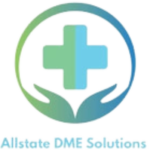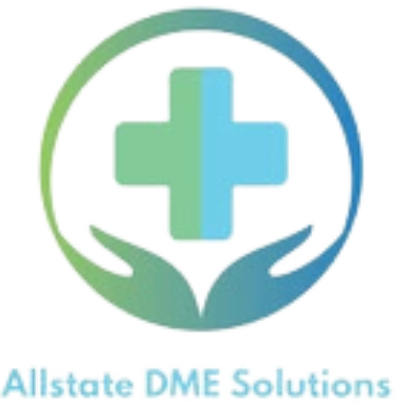
The medical devices industry is a dynamic and rapidly evolving field, where innovation is crucial for success. For consultants in this industry, staying innovative is not just a competitive advantage; it’s a necessity. With constant technological advancements, regulatory changes, and increasing market competition, consultants must continuously adapt and evolve to provide the best solutions to their clients. This article explores how consultants can stay innovative in this rapidly changing landscape.
Understanding the Medical Devices Industry
The medical devices industry encompasses a wide range of products used in healthcare, from simple instruments like scalpels to complex machinery like MRI scanners. This industry has seen significant growth and development over the years, driven by advancements in technology and increasing healthcare needs. Understanding the scope and evolution of this industry is essential for consultants aiming to stay ahead.
Historical Development and Milestones
The history of medical devices is marked by significant milestones, such as the invention of the stethoscope in the early 19th century, the development of the X-ray machine in the late 19th century, and the introduction of the first pacemaker in the mid-20th century. Each of these innovations has revolutionized healthcare and paved the way for further advancements.
Current Market Trends
Today, the medical devices market is characterized by rapid technological advancements, increasing digitalization, and a growing focus on personalized medicine. Key trends include the integration of artificial intelligence (AI) and machine learning (ML), the use of Internet of Things (IoT) technologies, and the rise of minimally invasive surgical devices.
Importance of Innovation in Medical Devices
Innovation in the medical devices industry is essential for several reasons:
Enhancing Patient Outcomes
Innovative medical devices can significantly improve patient outcomes by providing more accurate diagnoses, better treatment options, and less invasive procedures. For example, AI-powered diagnostic tools can detect diseases at an earlier stage, leading to more effective treatments.
Staying Competitive
In a highly competitive market, staying innovative is crucial for maintaining a competitive edge. Companies that fail to innovate risk being left behind by their competitors who are constantly bringing new and improved products to market.
Meeting Regulatory Requirements
Regulatory bodies are continually updating their requirements to ensure the safety and efficacy of medical devices. Staying innovative helps companies meet these evolving standards and avoid regulatory pitfalls.
Key Challenges in the Medical Devices Industry
Regulatory Changes
The medical devices industry is heavily regulated, with agencies like the FDA in the United States and the EMA in Europe setting stringent requirements. Keeping up with these changing regulations is a significant challenge for consultants.
Technological Advancements
The rapid pace of technological change means that consultants must constantly stay abreast of new developments and understand how they can be applied to their clients’ needs.
Market Competition
The medical devices market is highly competitive, with many players vying for market share. Consultants need to help their clients differentiate themselves through innovative products and services.
Economic Pressures
Economic factors, such as healthcare spending cuts and pricing pressures, can impact the profitability of medical device companies. Consultants must find ways to help their clients navigate these challenges while remaining innovative.
Strategies for Staying Innovative
Embracing New Technologies
Staying at the forefront of technological advancements is crucial for innovation. Some of the key technologies driving innovation in the medical devices industry include:
Artificial Intelligence and Machine Learning
AI and ML are transforming the medical devices industry by enabling more accurate diagnostics, personalized treatments, and predictive analytics. For example, AI algorithms can analyze medical images to detect diseases that might be missed by human eyes.
Internet of Things (IoT)
IoT devices are being used to collect and transmit health data in real time, improving patient monitoring and enabling remote care. Wearable devices, such as smartwatches and fitness trackers, are prime examples of IoT applications in healthcare.
Robotics
Robotic technologies are revolutionizing surgery by allowing for more precise and less invasive procedures. Robotic-assisted surgery can reduce recovery times and improve surgical outcomes.
3D Printing
3D printing technology is being used to create custom medical devices, such as prosthetics and implants, tailored to the specific needs of patients. This technology allows for more personalized and effective treatments.
Continuous Education and Training
To stay innovative, consultants must commit to continuous education and training. This involves staying updated with the latest industry developments, attending conferences, participating in webinars, and pursuing relevant certifications.
Building a Diverse Team
Diversity in a team can lead to more innovative solutions by bringing together different perspectives and experiences. Consultants should aim to build teams with varied backgrounds, including engineering, biology, business, and healthcare.
Fostering a Culture of Innovation
Creating an environment where innovation can thrive is essential. This involves encouraging creativity, supporting risk-taking, and providing the necessary resources and tools for innovation.
Leveraging Partnerships and Collaborations
Collaboration with other companies, research institutions, and healthcare providers can drive innovation. These partnerships can provide access to new technologies, expertise, and market opportunities.
Technological Advancements and Their Impact
Overview of Recent Technological Advancements
The medical devices industry has seen numerous technological advancements in recent years. These include the development of AI-powered diagnostic tools, the use of IoT for patient monitoring, and the introduction of minimally invasive surgical devices.
Case Studies of Successful Innovations
Examining successful innovations can provide valuable insights. For example, the development of the Da Vinci Surgical System, a robotic surgical system, has revolutionized minimally invasive surgery. Another example is the use of AI algorithms in radiology to improve the accuracy of diagnostic imaging.
Potential Future Technologies
Looking ahead, technologies such as quantum computing, advanced biomaterials, and nanotechnology hold the potential to further revolutionize the medical devices industry.
Regulatory Landscape
Overview of Global Regulatory Bodies
Regulatory bodies such as the FDA, EMA, and MHRA play a critical role in ensuring the safety and efficacy of medical devices. Understanding their requirements is essential for consultants.
Recent Regulatory Changes and Their Implications
Recent changes in regulations, such as the introduction of the EU MDR, have significant implications for the industry. Staying compliant with these regulations requires continuous monitoring and adaptation.
Strategies for Staying Compliant
To stay compliant, consultants must develop robust regulatory strategies. This involves staying updated with regulatory changes, implementing comprehensive quality management systems, and conducting regular audits.
Market Analysis and Trends
Current Market Size and Growth Projections
The global medical devices market is projected to grow significantly in the coming years, driven by technological advancements and increasing healthcare needs. Understanding these trends is crucial for consultants.
Key Players in the Industry
Major players in the medical devices industry include companies like Medtronic, Johnson & Johnson, and Siemens Healthineers. Analyzing their strategies can provide valuable insights.
Emerging Markets and Opportunities
Emerging markets, such as China and India, present significant growth opportunities for the medical devices industry. Consultants should help their clients explore these markets and tailor their strategies accordingly.
Developing a Robust Innovation Strategy
Setting Clear Objectives and Goals
A clear innovation strategy starts with setting specific, measurable, achievable, relevant, and time-bound (SMART) objectives and goals.




